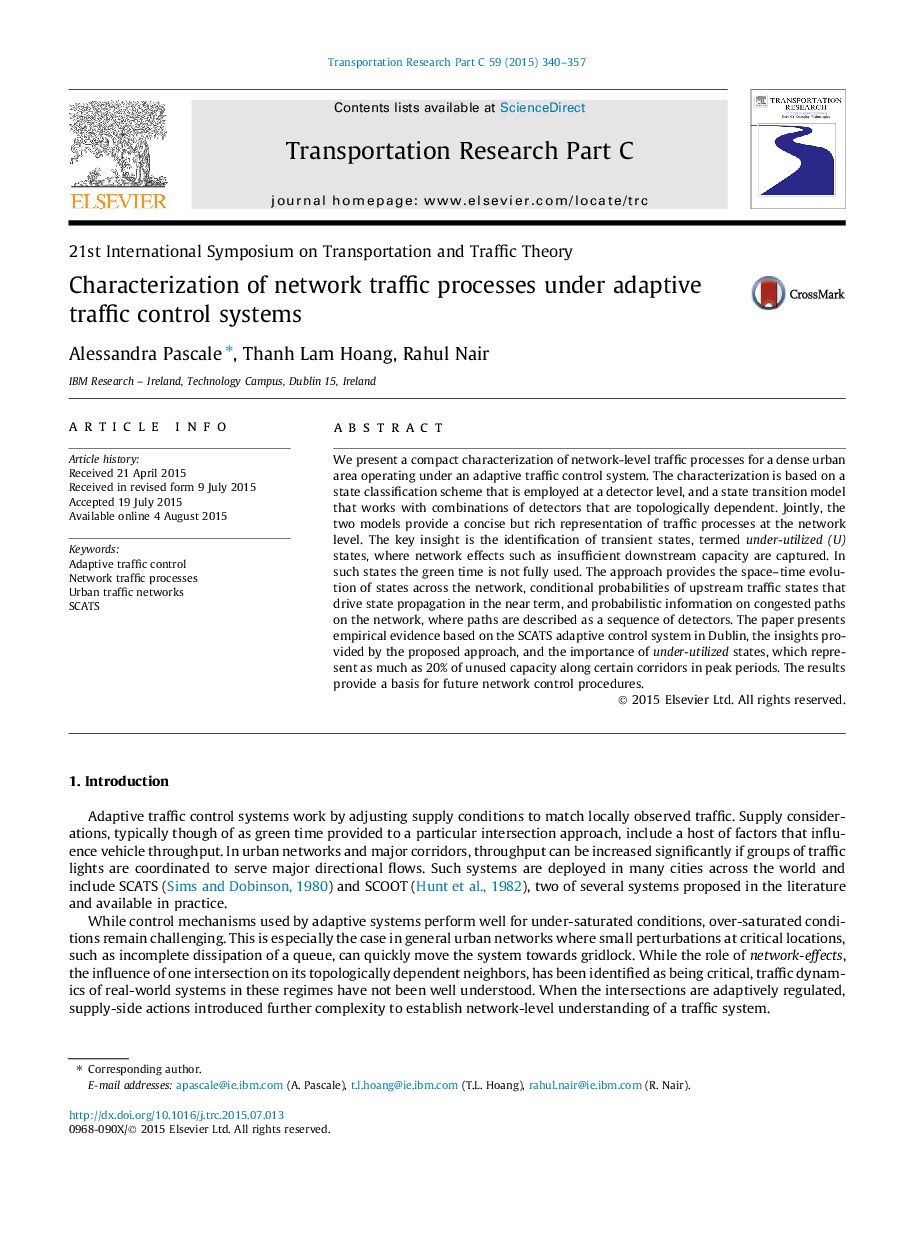| Article ID | Journal | Published Year | Pages | File Type |
|---|---|---|---|---|
| 524874 | Transportation Research Part C: Emerging Technologies | 2015 | 18 Pages |
•The characterization of the dynamics of arterial networks.•The identification of a transient state that can be attributed to network effects.•An interpretation scheme of field observations based on state classification.•A network transition model used to establish network relationships.•Empirical insights from the SCATS system in Dublin.
We present a compact characterization of network-level traffic processes for a dense urban area operating under an adaptive traffic control system. The characterization is based on a state classification scheme that is employed at a detector level, and a state transition model that works with combinations of detectors that are topologically dependent. Jointly, the two models provide a concise but rich representation of traffic processes at the network level. The key insight is the identification of transient states, termed under-utilized (U) states, where network effects such as insufficient downstream capacity are captured. In such states the green time is not fully used. The approach provides the space–time evolution of states across the network, conditional probabilities of upstream traffic states that drive state propagation in the near term, and probabilistic information on congested paths on the network, where paths are described as a sequence of detectors. The paper presents empirical evidence based on the SCATS adaptive control system in Dublin, the insights provided by the proposed approach, and the importance of under-utilized states, which represent as much as 20% of unused capacity along certain corridors in peak periods. The results provide a basis for future network control procedures.
